NATIONAL ZOO AND CONSERVATION BIOLOGY INSTITUTE
Meet Cassowary Brothers Irwin and Dundee, Descendants of Dinosaurs
Cassowaries are considered to be the dinosaurs’ closest living relative
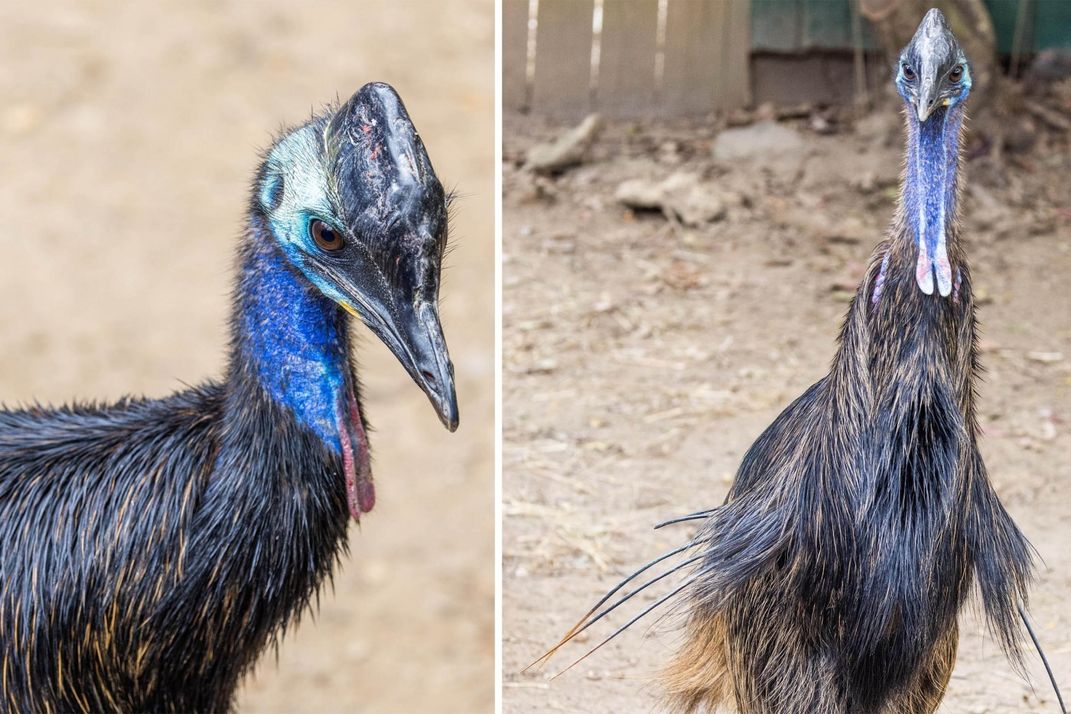
Standing eye-to-eye with a southern cassowary, it is easy to see how this giant bird is considered the dinosaurs’ closest living relative. With an imposing frame that is more than 5.5 feet tall, a helmet-like casque atop its head and a 5-inch-long, razor-sharp claw on each foot, the cassowary is both impressive and intimidating.
In October 2020, we took two of these avian ambassadors under our wing: brothers Irwin and Dundee. Considering all the new sights, sounds and construction happening at the Smithsonian's National Zoo's Bird House and Great Flight Aviary, they settled into their new home remarkably well. In June, they will turn 2 years old — Irwin on June 11 and Dundee on June 14.
Both are similar in size, but Dundee’s skin is lighter in color than Irwin’s — though that may change as they mature. Cassowaries’ heads and necks are mostly feather-bare, but their skin is a vibrant palette of turquoise blue and indigo. Two bright red wattles dangle from the base of their neck, which is why this species is also known as the double-wattled cassowary.
One of the cassowary’s most unique and dinosaur-like features is the casque atop its head. It is a hollow, pointed structure made of keratin, the same substance as our hair and nails. The purpose of the casque eluded scientists for years, but recent studies suggest that it serves as a thermal window that lets heat escape from their bodies — similar to humans sweating or dogs panting.
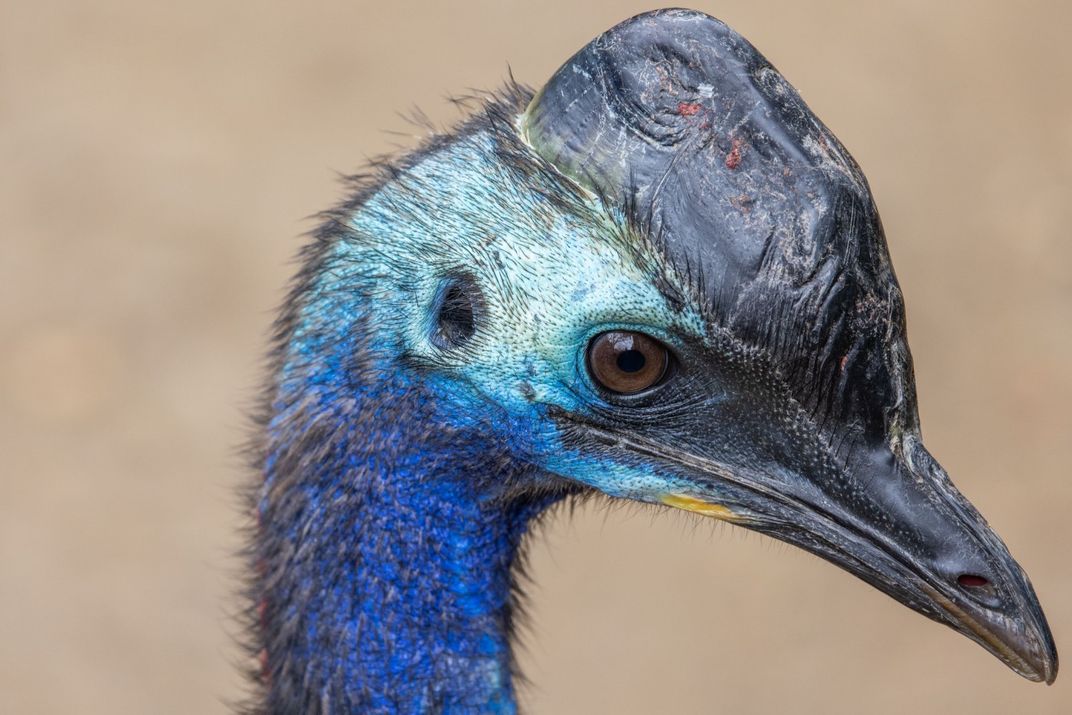
A common misconception is that cassowaries use their casques as a weapon. They do not, but they have some seriously amazing defense mechanisms in place. To start, they have extremely powerful legs. Cassowaries cannot fly, but they are incredible jumpers and can launch themselves up to 7 feet off the ground!
When cassowaries feel threatened, they jump ... and kick! The inside claw on both feet is razor-sharp and can grow up to 5 inches long. With one swipe, the cassowary can eviscerate its target. This is why we always interact with these birds through a safety barrier and never enter their space when they are present.
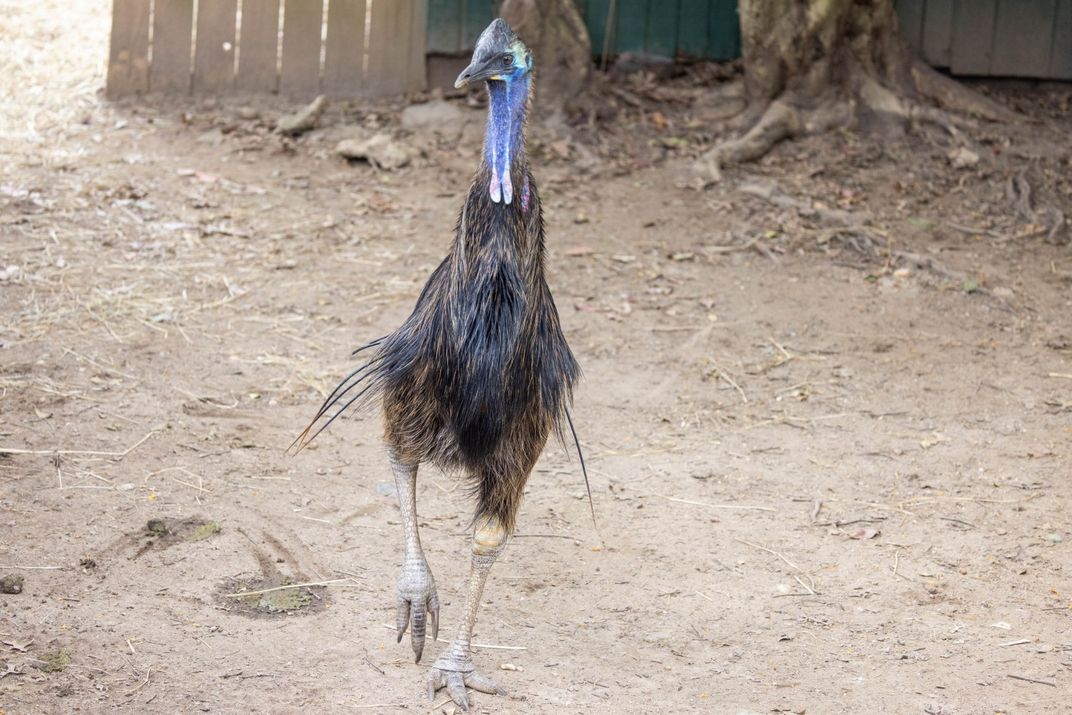
Despite not being able to interact with the cassowary brothers directly, we have come to know their personalities over the last seven months. Irwin is a natural born leader. He is almost always the first to investigate new things. Although cassowaries are usually cautious, Irwin is more curious. He seems to study the way that things move and operate, like their doors and feeders, which run on pulley systems.
Where Irwin leads, Dundee follows. Our younger cassowary is much more reserved and prefers to stand back and watch Irwin do things before he tries them. He is cautious in all respects with one exception: food. While both are food-motivated, Dundee’s enthusiasm about food is even more apparent.
Cassowaries are frugivores — that is, fruit comprises the majority of their diet. They are a keystone species in the rainforests of Australia; as they eat fruit and move through their territory, cassowaries deposit the seeds in their droppings. This enables new plants to grow, complete with natural cassowary-made fertilizer!
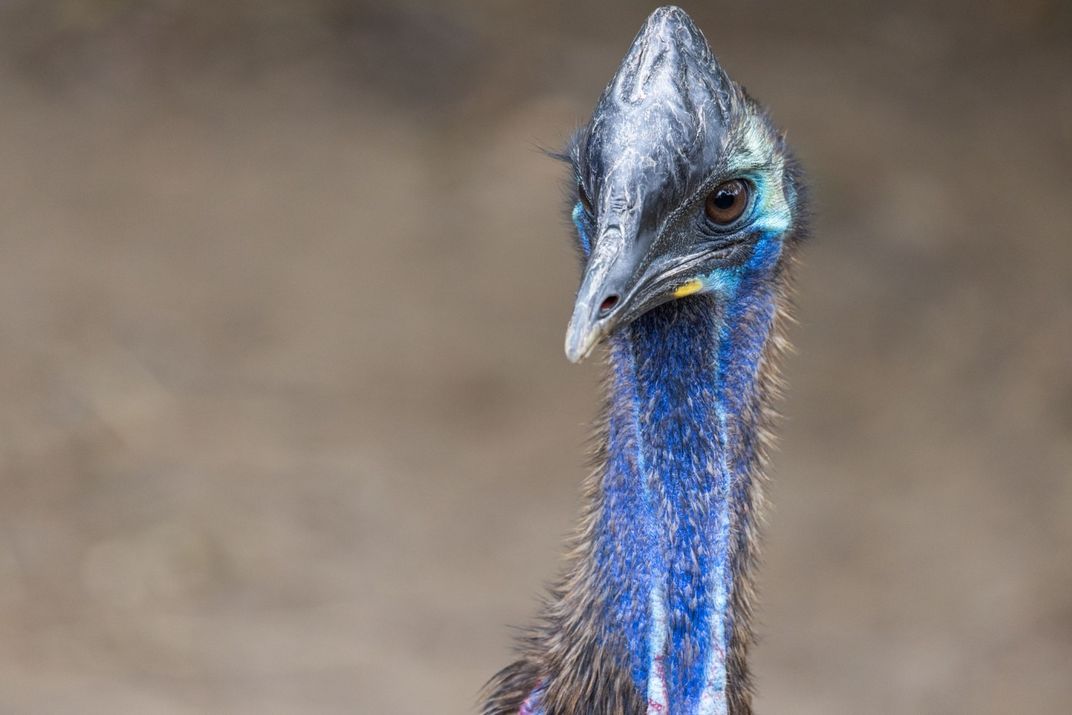
As part of their daily diet, our cassowaries receive an assortment of grapes, tomatoes, squash, papaya, bananas, apples, sweet potatoes and carrots. When Irwin and Dundee first arrived, we trained them to come into their indoor enclosure on cue by placing their food inside and ringing a bell to let them know it was mealtime.
They quickly associated the bell with food, and would even try to run through the door at the same time. Given their large size, though, they couldn’t enter side-by-side, so they would jockey to be the first one to the food!
Many of our birds are trained to voluntarily participate in their own healthcare in exchange for a favorite food reward. Once they mastered shifting indoors on cue, we trained them to stand on a scale. This helps us monitor their weights and ensure they are growing at a good pace.
We usually save the tomatoes, grapes, sweet potato and papaya for these training sessions, since those are Irwin and Dundee’s favorite foods. Recently, they both weighed-in at approximately 74 pounds (34 kilograms) each. As adults, male cassowaries typically weigh 121 pounds (55 kilograms), so they still have plenty of growing to do!
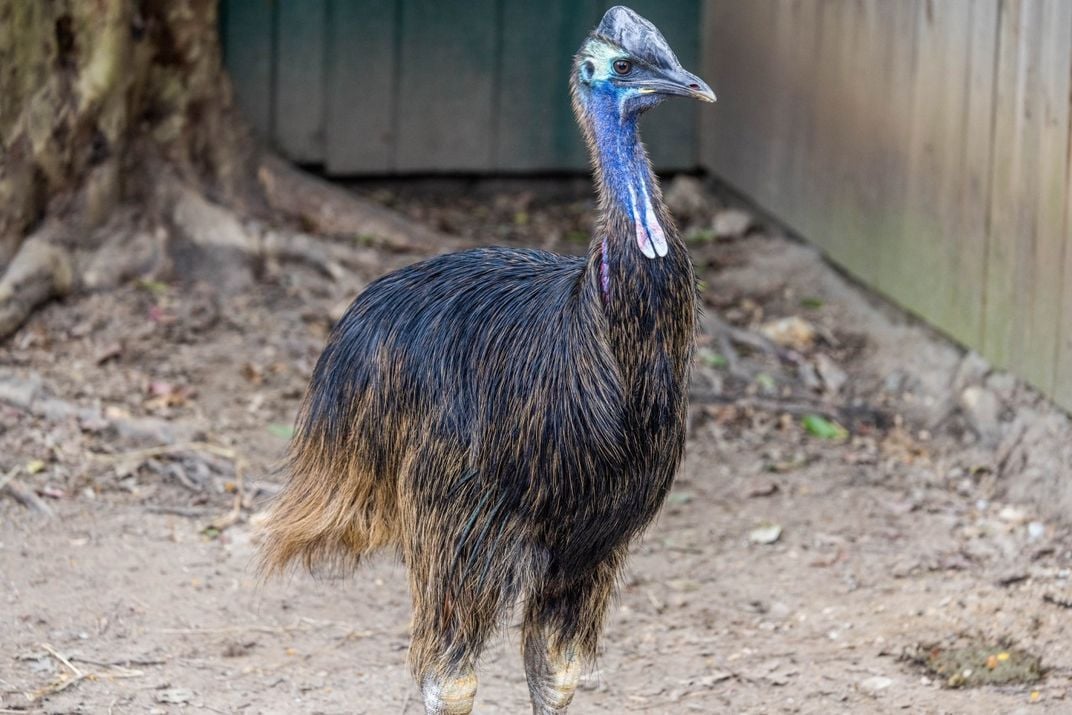
In the wild, cassowaries are solitary birds. When they first arrived at the Zoo, Irwin and Dundee got along well and even played with each other. Now that they are approaching their second birthdays, the boys are becoming more independent.
In early April, Irwin moved into a new habitat of his own accord, while Dundee stayed behind. Initially, we left the door between the habitats open, but the brothers did not seem interested in reuniting. Part of the process of growing up is going their separate ways, so this was a normal and expected progression. Their habitats are adjacent, so they can still see and interact with one another as they choose.
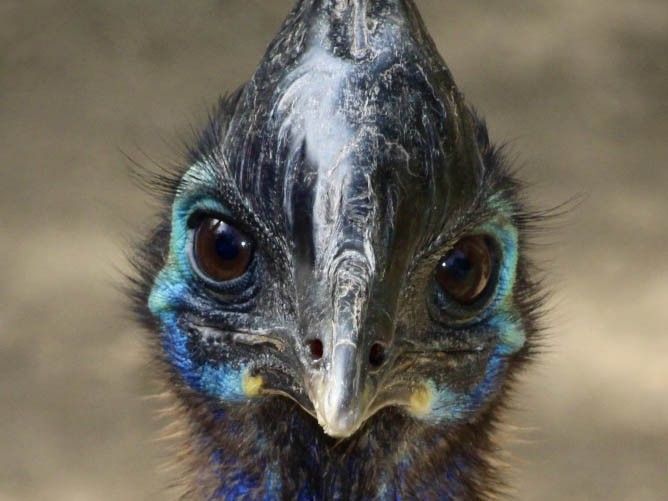
Watching these magnificent birds maneuver through their environment, one cannot help but sense the link between them and their ancient ancestors. The way that they interact with and study their surroundings is endlessly fascinating. We are honored to have Irwin and Dundee as ambassadors for their species and cannot wait to introduce them to visitors when the Bird House reopens in spring 2022!
This story appeared in the May 2021 issue of National Zoo News. Our whole team works diligently to care for our animals and keep you connected to the Zoo. With your support, our conservation mission continues. If you can, please join us in this important work by making a donation today. On behalf of the animals we care for and work to protect: thank you.
